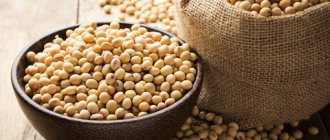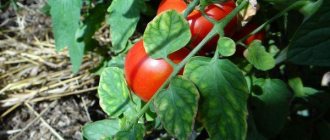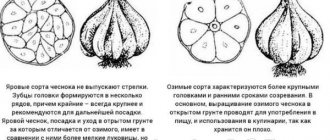Planting corn seeds in open ground occurs with the onset of warm weather. Cultivation often depends on natural conditions. Proper planting of a heat-loving crop, both seedlings and seeds directly in open ground, will provide an opportunity to enjoy sweet boiled grains in August.
Where is corn grown in Russia?
In Russia, the planting of heat-loving crops is carried out on 2,800 thousand hectares, mainly in the southern and central black earth regions. In many regions, the grain on the cob is fully ripened:
- in the North Caucasus;
- in the Krasnodar and Stavropol territories;
- Rostov, Volgograd, Voronezh, Kaluga, Kaliningrad and other regions;
- in the southern regions of the Far East and Siberia.
The technology of growing corn by planting seeds in open ground makes it possible to cultivate a valuable forage plant for animal feed as silage and greens in all regions of the middle zone. The country is in the second ten for corn grain production in the world. The average yield corresponds to the global one - 54.6 c/ha. The seeds are used as fodder; starch, cereals, flour, and ethanol are made from them. In addition to the food industry, they serve as technical raw materials in other areas.
Features of growing corn
Anyone who wants to plant seeds in open ground should take into account that seedlings slow down their development already at + 6 °C. Among the main conditions for the growth of corn, there are planting rules:
- in crowded open ground plantings, seeds do not ripen;
- on a monoecious plant that requires cross-pollination, the inflorescences are located in different parts of the stem; it is better to plant them not in long single rows, but in one square array;
- the powerful roots of the crop reach a depth of more than 1 m, corn can withstand dry periods, although the filling of the cobs with ripened seeds suffers;
- For good yield, water during the flowering and seed formation phases.
When to plant corn in open ground
The culture develops within + 12-25 °C, gaining green mass only at temperatures above + 12 °C. If the temperature is below 15 °C at night, development is inhibited and the cobs do not ripen. In spring, seedlings will withstand frosts down to -1 °C, although the sprouts will become much weaker and turn yellow. If it gets warmer, corn planted with seeds in open ground will level out and give good yield.
In the southern regions, grain is sown from the twentieth of April to May 15, at + 10-12 °C. In the climatic conditions of many regions of the central zone, corn for grain is not planted in open ground, because the cobs do not ripen, sometimes they do not even reach milky ripeness. In regions north of the Kaluga and Bryansk regions, spring temperatures reach stable heat levels later. Here, corn is not grown on a personal plot by planting seeds directly in gardens, but the harvest is obtained through seedlings for consumption in the milky ripeness phase.
How to plant corn in the garden
If the region is favorable for the crop, correct planting of corn in relation to the choice of site, layout of holes, time of sowing seeds in open ground will bring a successful harvest of tasty cobs in August.
Preparing the landing site and soil
The drought-resistant crop gives a good harvest in areas with an acidity of 5.5 to 7.0 pH, which is taken into account when growing corn in the country:
- loams;
- sandy loams;
- chernozems.
On sandy soils, planting is carried out in the presence of irrigation or frequent rainfall. An important condition for the yield of a crop grown by planting seeds in open ground is the fertility of the site. Suitable predecessors:
- tomatoes;
- melons;
- grain crops;
- roots.
The site chosen is spacious and sunny. Fertile soil for planting plants with a strong habit is provided in the fall. Enrich with organic matter before autumn plowing, adding 30-50 g of phosphorus-potassium preparations. Modern varieties are less prone to lodging, but select areas with wind protection.
Attention! Corn develops well on fertile, moisture-intensive lands with neutral acidity; it does not grow in lowlands with heavy soils and stagnant moisture, as well as on peat bogs.
Soaking corn before planting
Before planting in open ground, seeds are stored in a cool and dry place. To ensure rapid germination, corn is soaked in plain water for 12-20 hours before planting. Summer residents also use melt water or dissolve a spoonful of honey in a glass of water, and also mix aloe juice and water equally. First, immerse the seeds in a fabric bag in a slightly pink solution of potassium permanganate. For soaking, place a cloth on a plate and a ball of seeds on top. Pour enough water so that the grains are not completely submerged. Plant corn in the ground with wet seeds, without drying.
Warning! If the area is infested with underground pests, the seeds are treated.
Corn planting scheme
A crop that requires cross-pollination has two different inflorescences on one plant, a female and a male. For productivity, plant in an equilateral area. A proven scheme for planting corn in open ground on private farms is the square-cluster method. The holes are made at a distance of 60-70 cm. Another option: in the row spacing the interval is 60 cm, between nests at least 40 cm.
Advice! In mixed plantings with cucumbers or pumpkins, the holes are placed every 1-1.5 m.
Corn planting depth
It has been noticed that it is better to deepen seeds in open ground by 3-4 cm in heavy soils and up to 7 cm in sandy loam. The grains have time to warm up, and seedlings emerge in warm weather after 10-12 days. With different methods of planting corn using modern hand-held seeders for large seeds, the planting depth is also adjustable.
How to plant corn in open ground with seeds
Planting seeds directly into open ground is best done in still moist soil that has retained spring moisture deep down. If the temperature is suitable for sowing, using a special garden marker, similar to a huge rake, draw lines, at the intersection of which holes are made. The marker teeth are adjusted to the optimal distance for planting corn. Use a hoe to make holes to the required depth and, while the soil is wet, immediately throw in at least three or four seeds.
When the sprouts rise to 7-8 cm, they are thinned out, leaving the strongest ones. In the southern regions, two sprouts are usually left in the nest, in the northern regions - one at a time. For those who want to plant corn and cucumbers, the holes are placed, doubling the interval between them.
Comment! To enjoy delicious cobs in milky ripeness for a long time, they use the conveyor method of planting sugar varieties. Seeds are planted every 2 weeks, starting from late April to early June.
Corn planting time according to the lunar calendar
The lunar calendar has proven itself to be an excellent adviser in terms of agricultural work. Millions of gardeners and vegetable growers around the world follow his recommendations when planning agricultural work.
The best days for planting
In 2022, it is worth planting corn on the following days:
| April | 1 | 2 | 7 | 24 | 27 | 28 | 29 | ||
| May | 4 | 5 | 6 | 27 | 28 | 29 | |||
| June | 1 | 2 | 3 | 4 | 22 | 23 | 28 | 29 | 30 |
The grains planted at this time promise to bring a good sugar harvest.
Bad days
Planting work should be abandoned on the following days:
| April | 8 | 15 | 16 | 17 | 23 |
| May | 7 | 13 | 14 | 22 | |
| June | 5 | 9 | 10 | 11 | 21 |
On the indicated dates, the Moon is not conducive to the growth and development of corn.
How much should you trust the lunar calendar?
The influence of the Moon on all living things on our planet has been proven. For example, in plants, depending on its phase, the direction of internal flows changes:
- For this reason, it is better to plan sowing work on the waxing and waning moon. After all, it is during these periods that the flora begins to develop intensively and begins to grow.
- On the new moon, on the contrary, active growth stops. At this time, it is better to start pruning the garden and ridding the area of diseases and pests.
- During the full moon, you should also refrain from sowing. It is better to devote this time to fertilizing and harvesting.
One way or another, blindly following the calendar is also wrong. After all, LC is just one of the tools of agricultural technology, and, it should be noted, it is not the most important. Much more significant are the rules for growing corn, which affect the following aspects:
- landing time and its features;
- place and soil;
- temperature regime;
- watering and humidity level;
- rules for applying fertilizers;
- stepsoning, etc.
Based on this, we can conclude that you can rely on the lunar calendar, but not follow it strictly. After all, if corn grains are placed in Siberian soil on April 1 (a favorable day according to the LC in 2022), when night frosts are still raging in the region, the result will not be clear. And this once again proves that in agronomy, as, indeed, in any other matter, everything is good in moderation.
How to grow corn in the country
Corn sowing is carried out in compliance with the requirements for cultivating a heat-loving plant.
Agroclimatic conditions for growing corn
The best climatic conditions for planting seeds directly into open ground are observed in regions where high summer temperatures persist for a long time. Here you can grow corn for grain. In other areas, seeds are planted in the garden to obtain cobs at milky ripeness. Personal farms grow early-ripening sugar varieties that are ready for consumption in 60-70 days. Looking at the photo of how corn grows, you can see well-groomed beds. The crop is not so much demanding on certain soils as it is on agricultural technology.
How often to water corn
Plants require a lot of moisture during the month, after 45-55 days from germination. Then panicles are formed on the tops and female inflorescences, stigmas, on future ears. Watering corn in open ground is important 10-15 days before the top male inflorescences begin to be ejected and until the resulting seeds enter the milky ripeness phase.
It is during this period that the lack of moisture affects the yield: short, incomplete ears and small seeds may form. At the same time, you need to know that excess moisture, rain at low summer temperatures, below 20 ° C, also significantly slow down the growth of corn and even lead to the spread of diseases. Plants are watered once a week.
Corn feeding
Fertilize in the early stages of development, when 6-7 leaves are formed. Organic and mineral preparations are used. Fertilizers are dissolved in water and applied between rows on wet soil.
Mulching and loosening
The beds are often loosened, at least 3 times during the growing season, and weeds are removed. In the middle zone, it is advisable to grow corn on a high layer of mulch, which provides additional nutrition and reduces the growth of weeds. Care must include the removal of stepsons that form at the bottom of the stem. Otherwise, a bush will form, not cobs.
Planting care
Corn is mistakenly considered an absolutely unpretentious plant that can grow with little or no care. In reality, the agricultural technology of this crop must be competent and complete. In addition to the usual activities, a number of other measures need to be taken:
- remove side shoots;
- do not allow the soil to dry out during the flowering period, otherwise the stigmas will stop pollinating;
- shake flowering plants to speed up the pollination process.
All other procedures are similar to caring for any garden crops.
Weeding and loosening the soil must be done simultaneously with hilling. Long and heavy stems require good stability so that they do not fall to the ground under the influence of the wind. When hilling, it is recommended to rake the soil under each plant in sufficient quantities to provide reliable support.
Related article:
5 varieties of delicious corn that will delight you with a good harvest
Watering should be moderate. Corn loves water, but increased soil moisture “blocks” the access of oxygen to the root system. This leads to the death of roots and drying out of leaves. To avoid such consequences, no more than 2 liters of water should be poured under each plant at a time, keeping the soil slightly moist. Better yet, install drip irrigation, in which water is supplied directly to the roots.
Fertilizing is done twice:
- immediately after the formation of the second pair of leaves - with a solution of humus or chicken droppings;
- the second time - a month later, using ammonium nitrate (200 g per 10 sq. m), potassium salt (200 g per 10 sq. m) and superphosphate (400 g per 10 sq. m).
You can apply fertilizers at the same time as watering, adding nutrients to the water.
Growing corn in a greenhouse
In greenhouses, only sugar varieties are cared for, since growing grain indoors is unprofitable. When planting, it is necessary to take into account that the crop produces a very poor harvest on acidic soils. Liming is carried out or replaced with chernozem, light loam with neutral acidity. Sow the seeds to a depth of 3 cm. Provide good lighting, watering with drip irrigation with combined fertilizing, warmth, initially from 12 °C, when ripe - up to 24 °C. Shoots appear on days 5-7. It is advisable to carry out artificial pollination during the flowering stage.
Site preparation
The planting site is cleared of plant debris. The site is dug up in the fall. If it was not possible to carry out the procedure during this period, it is carried out in the spring, a month before planting corn. The digging depth is 25-30 centimeters.
If the soil is podzolic, in the spring, when digging, the following nutrients are added per 1 m² of area:
- 4-5 kg of humus;
- 20 grams of superphosphate;
- 20 grams of potassium salt.
When planting corn, add a glass of humus and a pinch of superphosphate to the hole. This helps to increase crop yield by 15-20%.
If a large amount of weeds grows on the site, before planting corn, you need to treat it with herbicides, according to the instructions. Otherwise, growing quickly, the weeds will not allow the cultivated plant to develop. The following chemicals successfully control weeds: Lancaster, Premium Gold, Oscar Premium.
To warm the earth better, you can install a greenhouse. To do this, the ground is covered with agrofibre or film. In warm soil, the root system of a crop quickly adapts to a new location.
Diseases and pests of corn
Common fungal diseases:
- dusty and blister smut, characterized by black and gray fungal formations;
- fusarium is noticeable with pinkish areas on the cob;
- Anthracnose causes rotting of the stem and ears.
To protect the crop from diseases, seeds are treated with fungicides Vitavax, Ditox, Granivit before planting.
Parasites on corn:
- root aphid, which leads to damage to sprouts;
- stem moth, whose caterpillar feeds on leaves and cobs;
- Swedish fly harms sprouts;
- The cotton bollworm destroys the pistil threads, which deforms the cobs.
In a small area, in the fight against pests, they maintain an optimal soil balance, remove all plant residues, and observe crop rotation.
Harvesting
Sugar species are harvested from July to the end of August, depending on the variety, method and time of planting. The seeds on the finished cobs are round, filled with juice, with a glossy skin of light yellow or cream color. Varieties with white grains have a corresponding color. When pressed, whitish juice squirts out. Overripe seeds are yellower and quite hard to the touch. The milky ripeness phase passes very quickly; it is better to harvest the crop completely. The cobs are stored in the refrigerator for up to 2 weeks, the seeds are frozen and canned.
At the stage of biological ripeness, by the end of September and mid-October, the grains are hard and hard. The color depends on the variety - bright yellow, creamy white or red-brown. The leaves and stem dry out, lose their green color, and are parchment-like to the touch. Corn for grain and popcorn is harvested at the biological ripening stage. Store in a dry place.
Features and variety selection
Corn is an annual plant with cross-pollinated inflorescences of different sexes on one stem. In Russian conditions, it usually grows to a height of 2-2.5 m. The root system is developed, going 1.5-2 meters deep into the ground - this allows the crop to tolerate a lack of moisture well and provides resistance to strong winds. The weight of the cob depends on the variety and averages 200-300 g. In summer cottages, sugar types of corn are mainly grown - they are distinguished by a higher content of sugary substances and a more delicate taste of young cobs. For Russian conditions, there are many cold-resistant hybrids of the siliceous type - their sowing time is earlier than that of other species.
In the Russian climate, it is preferable to cultivate corn varieties with early and medium ripening periods. It is advisable to plant late-ripening species in the southern regions.
A group of early ripening (ripening period from 60 to 80 days) hybrids and varieties of sweet corn:
- Gourmand 121;
- Spirit;
- Sundance;
- Trophy F1.
Variety Lakomka
Variety Trophy
In central Russia you can also grow varieties with an average ripening period (about 80-90 days):
- Early Golden;
- Pearl;
- Krasnodar Sugar;
- Jubilee;
- Favorite.
Krasnodar sugar variety
Variety Jubilee
Late varieties need a long period of time for the harvest to ripen (on average 90-105 days), but they are more resistant to unfavorable conditions:
- Russian bursting 3;
- Polaris;
- Ice nectar.
Variety Polaris
Variety Ice Nectar
Secrets of growing corn
When cultivating crops in open ground, follow the requirements:
- planting is carried out when the soil warms up to 12 ° C;
- seeds are planted in moist soil to a depth of 4-7 cm;
- successful planting only in spacious sunny areas;
- 3-time loosening of the soil with removal of weeds;
- Stepchildren are removed from sugar varieties;
- planting over large areas with preliminary seed treatment.
The key to successful corn cultivation is deep plowing of the site and autumn fertilizing with organic matter with superphosphate and potassium preparations.
Soil and seed preparation
For this crop at your dacha you need to choose a sunny area, well protected from the wind. It is better to plan your garden so that legumes and pumpkins are grown nearby along with corn. Peas and beans will well saturate the soil with the nitrogen necessary for corn, and wide pumpkin leaves will cover its roots and protect it from overheating.
Sowing time
How to plant corn in the garden
The soil should be well heated, with high water and air permeability, as well as a significant humus content. Mineral and organic fertilizers are applied to the garden bed in advance.
Note! The best precursors for corn are tomatoes, potatoes, cabbage and legumes.
Since the future harvest directly depends on the quality of the seed, the largest seeds without damage should be selected for planting. The next step is to treat the grains in order to get rid of pathogens of various diseases. To do this, you can use a weak solution of potassium permanganate, hydrogen peroxide, and industrial pesticides. Another disinfection method involves placing corn kernels alternately in hot and cold water.











